|
John Tyman's Cultures in Context Series NEPAL |
|
|
|
414-446 |
|
John Tyman's Cultures in Context Series NEPAL |
|
|
|
414-446 |
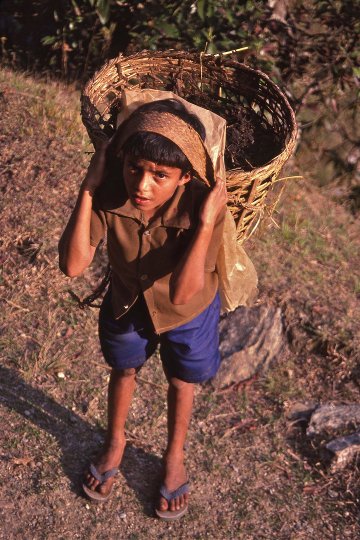 |
| 415. After that they will be given chores to do -- like carrying manure from the farmyard to the fields with the help of a basket (dhoko) and rubber thongs. |
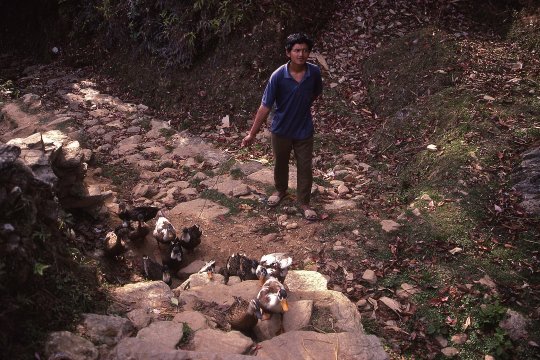 |
| 416. If the family has ducks they will be taken to the pond. |
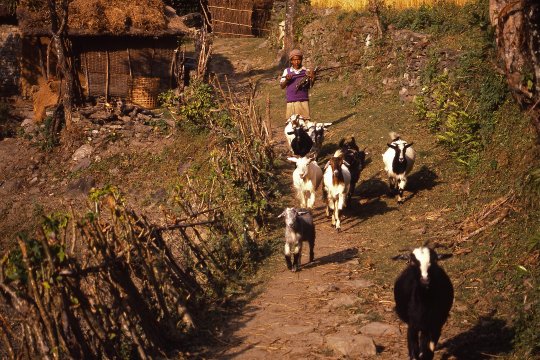 |
| 417. And their goats get their first meal of the day. |
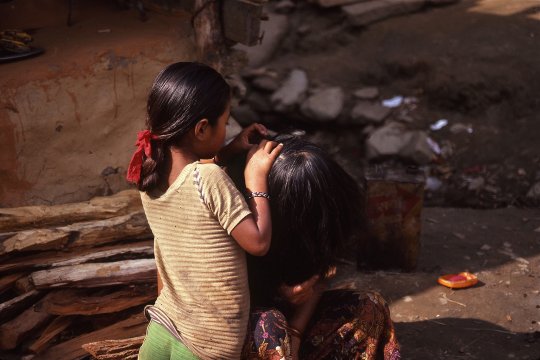 |
| 418. Alternatively, there may be enough daylight now for children to finish their school homework, and get checked for head lice before they leave home. |
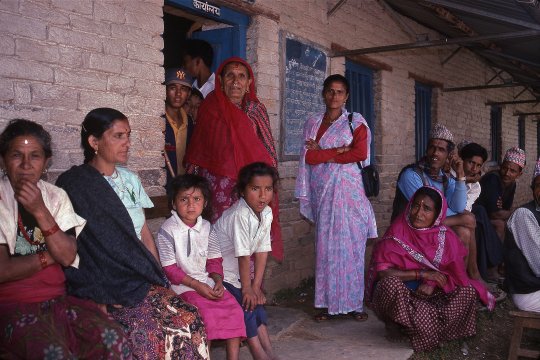 |
| 420. The school at Ramja Thanti was built 27 years ago by local people, using brick as well as stone, with financial assistance from overseas donors, and some help from UNESCO. |
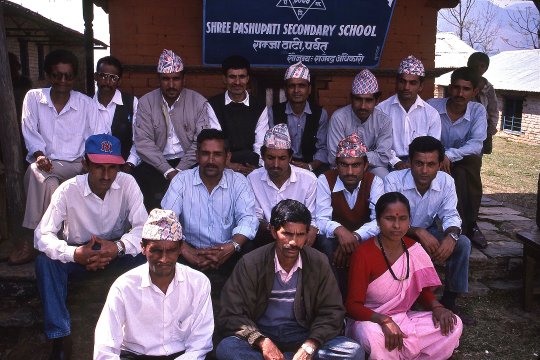 |
| 423. The teachers working in the secondary department are all college graduates (or close to finishing their courses) but not those working in the lower grades. |
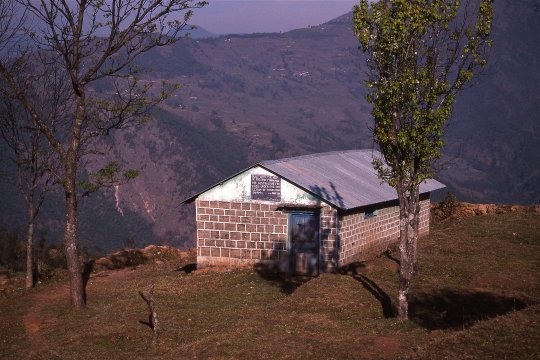 |
| 428. Till recently the school did not have a toilet block, which was clearly a health hazard for a school of that size. They now have one with views to Annapurna! |
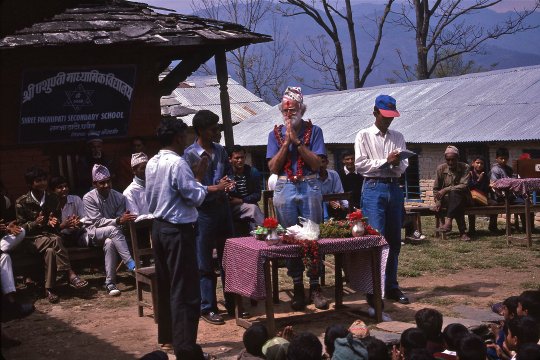 |
| 430. There was the usual round of speeches with typically Nepalese tributes, involving vermillion paste and garlands of rhododendrons. |
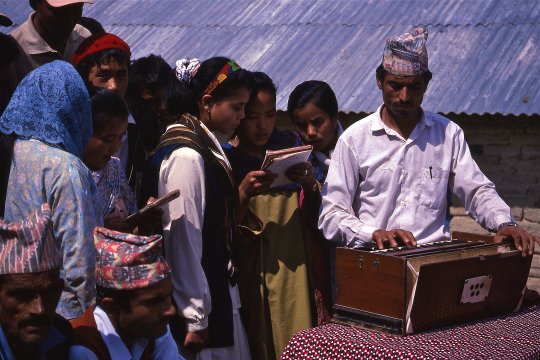 |
| 431. A small choir entertained the audience in a bracket of songs, with a harmonium accompaniment, much as school choirs do at assemblies in other countries. |
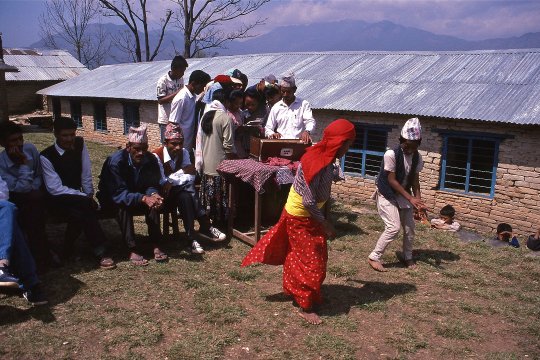 |
| 432. And there were folk dances, too, including one entitled: “Why tell me you are a good traditional girl when you dress the way you do?” [Video Extract 12] |
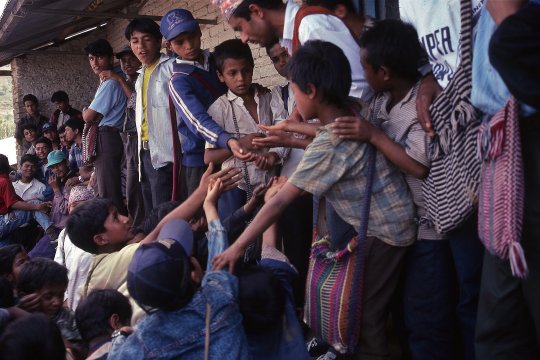 |
| 433. At the end the teachers distributed a stack of lollies I had brought from Australia, and there was a near riot! |
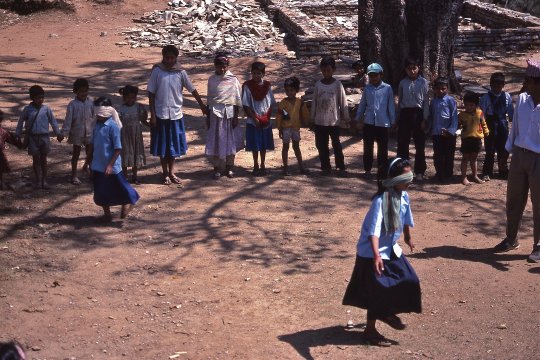 |
| 434. Ramja had the only secondary department in the area but there was a very much smaller primary school an hour or more’s walk away. |
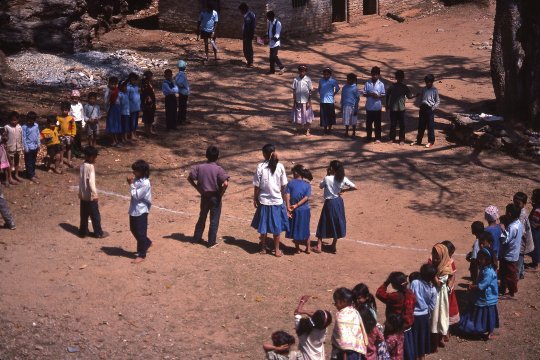 |
| 436. This was followed by another game -- kapardi -- which I vaguely remember from school in England, in which teams tried to penetrate the territory of the other side without being tagged. |
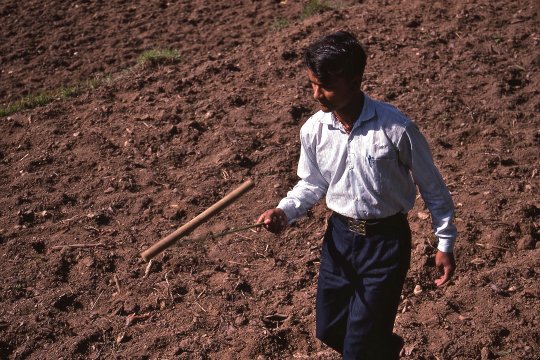 |
| 437. These were both team games and part of the school’s program, but I also saw individual children compete in juggling pieces of bamboo before school -- in a game known as dandibiawo. |
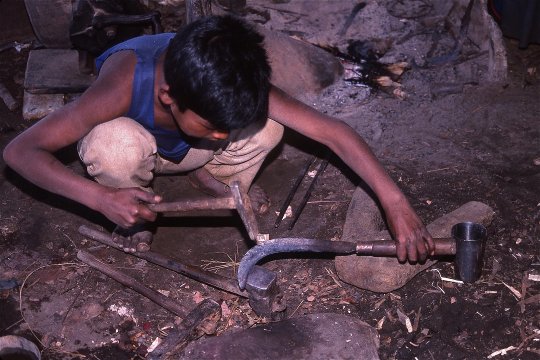 |
| 445. The children of occupational castes are likely to work at home. The blacksmith's son will help in his father’s workshop, working with steel, and maintaining the traditions of his group. |

![]()
Text, photos and recordings
by John Tyman
Intended for Educational Use
Only.
Contact Dr. John Tyman at johntyman2@gmail.com
for more information regarding
licensing.
![]()
www.hillmanweb.com
Photo processing, Web page layout,
formatting and hosting by
William
Hillman ~ Brandon, Manitoba ~ Canada